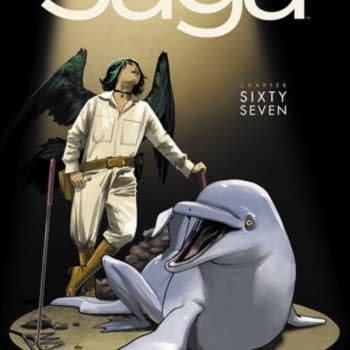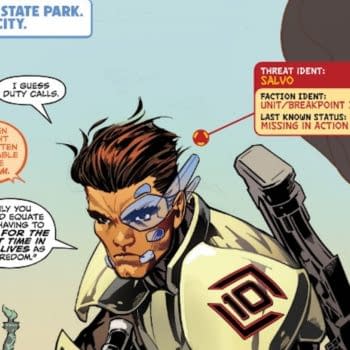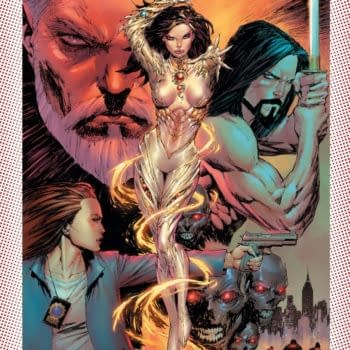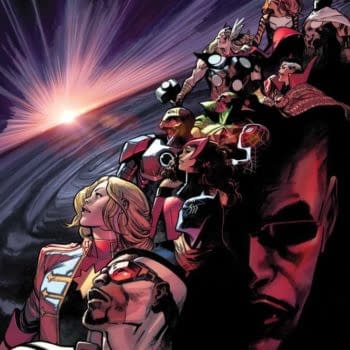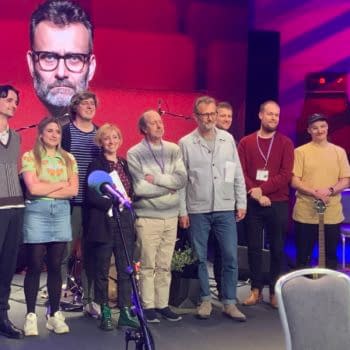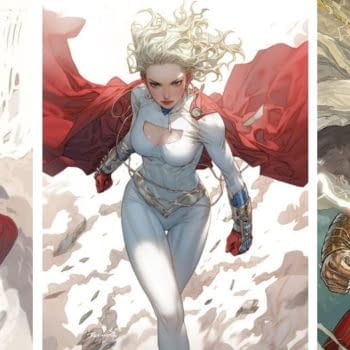Posted in: Comics | Tagged:
Margaret Stohl Says 'I Write Captain Marvel For Myself' at the ECCC Make Mine Marvel Panel
Ian Melton went to ECCC in Seattle a week-and-a-bit ago for Bleeding Cool. This is what he remembers…
For Marvel's second panel of 2018, several Marvel creators took to the stage at ECCC to talk creative process, personal stories, and just general wackiness working for the House of Ideas. "A relaxed panel" featuring Jim Zub (Co-writer on Avengers and upcoming writer for Champions), Margaret Stohl (writer on Captain Marvel), Ryan North (writer on the Unbeatable Squirrel Girl) and Jeremy Whitely (writer of the Unstoppable Wasp). The panel opened with everyone trying to introduce themselves and get laughs at the same time with Margaret Stohl wanting to introduce herself as "Ryan North, and I need no introduction…" but settling for explaining she writes Captain Marvel for Marvel. Jim Zub commented the distinction used to be important as "you could have said you write Captain Marvel for another company…"
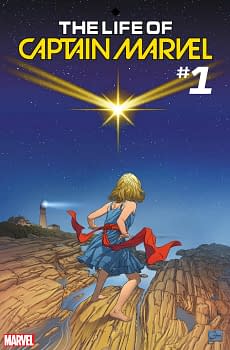
Set up entirely as question and answer for signed comics, which you could "smell the Marvel on them", to be given to people who asked the best, the funniest, whatever questions the panelists decided were worthy of a prize. Margaret Stohl took time before questions though to talk about Life of Captain Marvel and how fun and collaborative the story was and that she worked with Joe Quesada, Steve Wacker, Sana Amanat, and Axel Alonso (when he was there). The story is a "new look at an old story" which will be a "deeply personal story" and "a family story", which Stohl holds up as her "best work for Marvel, or as I told Ryan North 'I finally wrote something good for Marvel'." Up until this point Stohl commented Carol Danvers has had this "pastiche origin story" that comes from her having been introduced as a "side character to becoming the star of the show" and this is the first time we will get to see her full origin as her own character, and not just a sidekick.
Ryan North followed by talking about the next upcoming arc for the Unbeatable Squirrel Girl where Squirrel Girl will try to help her buddy Kraven, who has always been nice to her, stay on the path of virtue and not go back to being a super villain. However, her intentions will not go as planned and problems will quickly arise and people will get arrested in what Jim Zub titled "That's So Kraven". North commented this six issue arc will be a culmination of a lot of his work on Squirrel Girl as Kraven has been around the book since the beginning of it.
Next, Jim Zub brought up Avengers and the "No Surrender" arc, with the most important thing being that "so far they haven't surrendered". The "No Surrender" arc will conclude right before Avengers Infinity War hits the theater. Focusing on 26 Avengers, the arc, for those who don't know, has introduced "the lost Avenger" Voyager and the planet Earth has been stolen "which isn't affecting any other books … but don't worry about that". The arc came out of Tom Breevort asking Mark Waid, Al Ewing, and Zub what story would they do "if they had unlimited special effects budget".
Jeremy Whitely then focused on the Comixlogy exclusive Thor/Hulk miniseries, soon to be collected in a physical trade, which was designed to tell a tale taking the duo from a past point and playing off their rivalry. "Right now they are in very different places with Thor having lost an arm and Hulk … well having a case of being dead for a while." Utilizing the Elder of the Universe, The Champion, who Whitely described as being "well kind of boring in the past", and introducing the new Elder, The Promoter, who sets out to find for the Champion the strongest being in the universe, which comes down to Thor and the Hulk. The mini-series was designed to go "as big and crazy as possible" introducing concepts like a Brood/Frost Giant mix, and putting the Hulk and Thor through a crazy set of challenges to prove which one was stronger.
Fans began to ask questions after this with the first question being who the panelists' favorite X-Men character was, with the answer jokingly adopted by everyone that "the only correct answer is Jubilee." Whitely admitted that his actual favorite X-Man was probably Gambit, as he was a favorite from his childhood and one he has gotten to write in the All-New X-Men Monsters Unleashed one-shot. Zub's favorite is Storm for being "a great leader and the X-Men's moral core. Oh and Jubilee too…"
The next question was aimed at Margaret Stohl and asked what it is like having been a novelist before being a comic book writer, and what the differences between writing novels vs comic books are. Stohl started her answer with her two Black Widow novels, whose individual titles she couldn't quite remember, and that led to her being approached to write for Marvel Comics. For her first pitch she came up with a 70 page treatment, which was thrown out. The main issue she's found, and has discussed with Ta-Nehisi Coates, is that novelists write way too much dialogue per page. Stohl found that after she saw the page layouts she found her dialogue bubbles were suffocating the artwork, leading her to pop her "own balloons" and write comics more like poetry, paring it down to the bare essentials.
Continuing on this thread the discussion broadened to include different formats of comic writing, and Zub relating the tale of the twenty issues of Spider-Man he did for the European Ultimate Spider-Man magazine, which at 10 pages per story had to be quick done in one stories. This format really taught him how to write comic books better to the point that having a twenty page story feels like it has a huge amount of room in it for the story. North brought up his own online comic, Dinosaur Comics, which was whatever length he wanted, since it was his. However, his first Marvel story was only 8 pages, as was his next story, and from that he learned to "slash and burn" his stuff.
The next question asked about how the creators feel about side characters and creating supporting casts for their books. Stohl brought up her "proudest achievement as a human being" in having created an alternative reality where Groot is a carrot named Root and that Rocket is a female named Rockette.
Ryan North brought up his initial ideas for Squirrel Girl and that it was just Squirrel Girl and Galactus for his first arc. "I was then told, 'this is great, but are there any other characters?' which I then realized 'oh yeah I need a supporting cast!"
Jeremy Whitely brought up how much fun he had creating the G.I.R.L. Lab and the women in it. "The best part though was creating these teenage emo girls and then having Jarvis have to deal with that … in every issue of Unstoppable Wasp the best parts were the panels of Jarvis sighing."
Jim Zub got into the origin of the new Lethal Legion in Avengers "No Surrender" and how each member was a warrior who was just about to die before the Grandmaster snatched them away. "That's why they are called the Lethal Legion and we got to design a bunch of new villains and my favorite of those was created during a long brainstorming period. After 8 hours throwing around ideas you get kind of silly and punchy and I liked the idea of a character being able to attack from a distance that the artist can draw. Mark Waid said 'oh you mean like with tentacles', and I said 'yeah, but they don't have to just punch they can be like a mental power' and Al Ewing added in 'a mental tentacle, a … mentacle!' So for an hour we were saying that was the worst villain idea ever, to going 'that is an awesome idea' and such an old-school Stan Lee idea for a villain. So if you look at Avengers #676 you have the first appearance of Mentacle."
Next the panel was asked about writing "all-ages material" which kids can read but is enjoyed by adults, and how each of the writers approaches that. Ryan North says his short hand is it seems when writing "for kids" authors just write down at the readers whereas "all-ages" is for everybody. "My secret for all-ages comics is two things, everyone keeps their clothes on, and nobody swears, and you're good."
The following question was how Ryan North got started at Marvel. He had been doing his Dinosaur Comics for almost a decade online and not realizing how many saw his work. "So the secret is that one of the fans of my work grew up, got a job editing comics, and hired me to write an Adventure Time story which led to my work at Marvel … so I highly recommend put your work up online because you never know when a fan will grow up and give you work."
The final question of the panel evolved into a discussion of killing characters with Jeremy Whitely's stance being that "a well-constructed character can have so many worse things happen to them then dying. Like for Captain America failing people is far worse to him than his own death." Jim Zub added that death in comics and the perceived death of the Human Torch in the "No Surrender" arc were odd to him as "we were obviously not killing off the Human Torch, he's in two other books at Marvel. The true point of it was the audience knowing we weren't killing him but exploring the drama for the characters like Rogue who thought Johnny was dead."
With time up, and no comics having been given out as prizes, the panel concluded and the creators reminded the people as they left that Jubilee was still the best X-Men character.







